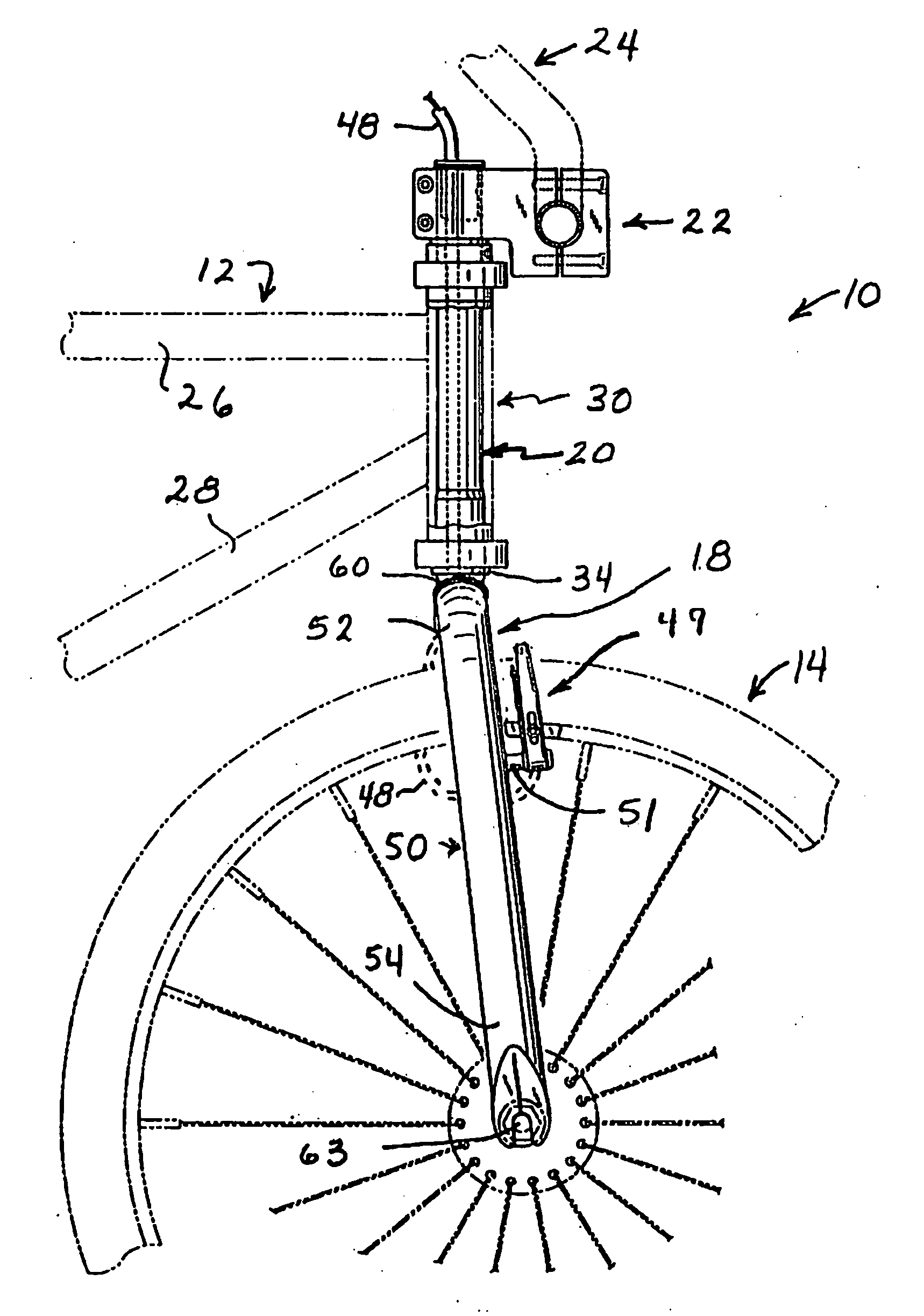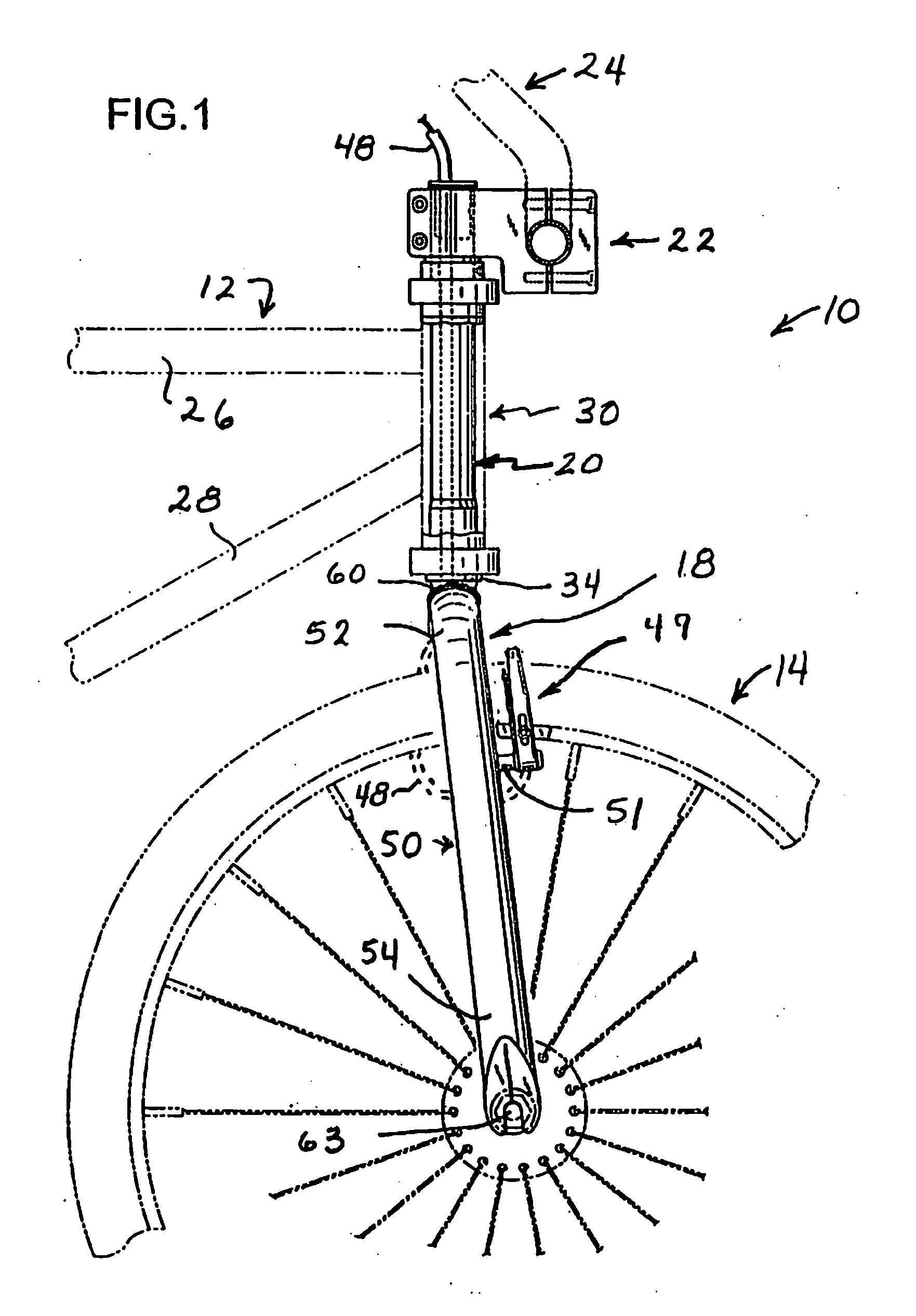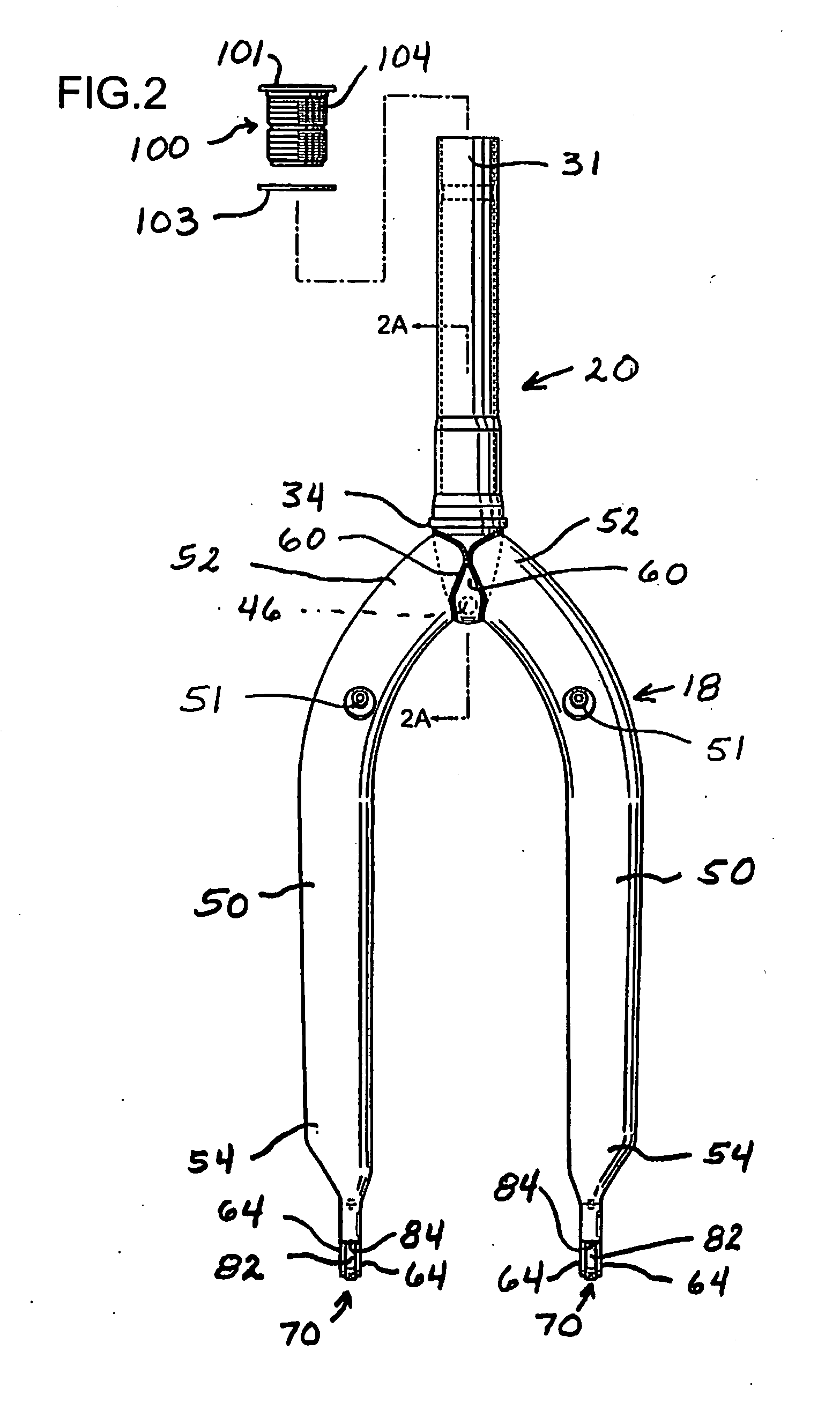Bicycle Fork and Steering Tube
a technology of steering tube and bicycle fork, which is applied in the direction of steering device, friction roller based transmission, cycle equipment, etc., can solve the problems of high construction complexity, particularly difficult to meet the needs of users, and the hole at the base of the steering tube of the finished fork is open, so as to reduce both weight and stress, the effect of superior construction
- Summary
- Abstract
- Description
- Claims
- Application Information
AI Technical Summary
Benefits of technology
Problems solved by technology
Method used
Image
Examples
Embodiment Construction
[0044]The detailed description set forth below in connection with the appended drawings is intended as a description of presently-preferred embodiments of the invention and is not intended to represent the only forms in which the present invention may be constructed or utilized. The description sets forth the functions and the sequence of steps for constructing and operating the invention in connection with the illustrated embodiments. However, it is to be understood that the same or equivalent functions and sequences may be accomplished by different embodiments that are also intended to be encompassed within the spirit and scope of the invention.
[0045]FIG. 1 illustrates the front portion of a BMX bicycle 10, which includes a conventional bicycle framework illustrated partially in phantom at 12, a front bicycle wheel illustrated in phantom at 14, and the combination of a bicycle fork and steering tube assembly indicated generally at 16 in FIG. 2. The assembly 16 includes a bicycle f...
PUM
 Login to View More
Login to View More Abstract
Description
Claims
Application Information
 Login to View More
Login to View More - R&D
- Intellectual Property
- Life Sciences
- Materials
- Tech Scout
- Unparalleled Data Quality
- Higher Quality Content
- 60% Fewer Hallucinations
Browse by: Latest US Patents, China's latest patents, Technical Efficacy Thesaurus, Application Domain, Technology Topic, Popular Technical Reports.
© 2025 PatSnap. All rights reserved.Legal|Privacy policy|Modern Slavery Act Transparency Statement|Sitemap|About US| Contact US: help@patsnap.com



